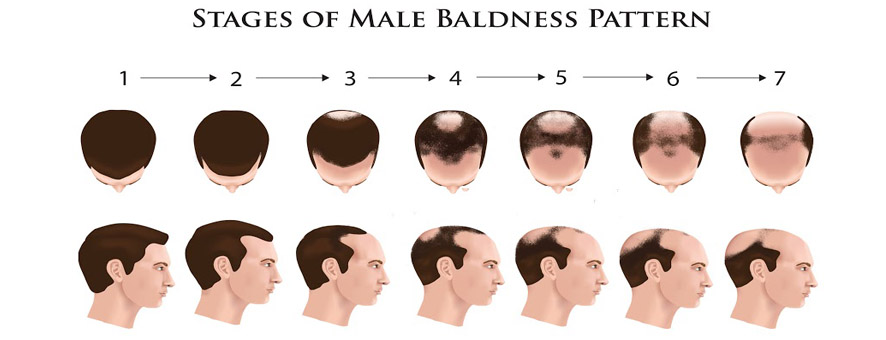Blitz News Digest
Stay updated with the latest trends and insights.
Hair Today, Gone Tomorrow: What Your Hairline is Trying to Tell You
Discover what your hairline reveals about your health and confidence. Uncover secrets today in Hair Today, Gone Tomorrow!
Understanding the Signs: What Your Receding Hairline May Indicate
A receding hairline can be a common concern for many individuals, particularly as they age. It often signals changes in genetics, hormones, or overall health. Understanding the signs of a receding hairline is crucial, as it may indicate underlying issues such as stress, nutritional deficiencies, or medical conditions like androgenetic alopecia. Recognizing these signs early can lead to timely interventions, whether seeking professional advice or adopting lifestyle changes to manage hair health.
One of the primary indicators of a receding hairline is a gradual thinning of hair at the temples and forehead. Visual cues can include a noticeable M-shaped pattern, and in some cases, a widening of the part in your hair. Additionally, you may want to consider your family history, as hereditary factors often play a significant role in hair loss. If you notice changes that align with these signs, it's essential to consult a healthcare provider for a thorough assessment and possible treatments.

The Science Behind Hair Loss: Insights into Your Hairline Changes
Understanding the science behind hair loss begins with recognizing the complex biological processes at play. Hair loss can occur due to a variety of factors including genetics, hormonal changes, and environmental influences. For many, the most common form is androgenetic alopecia, often referred to as male or female pattern baldness. This condition is characterized by a gradual thinning of hair, primarily affecting the hairline and crown areas. The hormonal imbalance that leads to this type of hair loss is often triggered by the presence of dihydrotestosterone (DHT), a derivative of testosterone that shrinks hair follicles, resulting in shorter and finer hair strands.
Another critical aspect of hair loss is its psychological impact. For numerous individuals, witnessing changes in their hairline can lead to feelings of anxiety and diminished self-esteem. It's essential to recognize that hair loss can also be exacerbated by factors such as stress, poor nutrition, and certain medical conditions. Additionally, everyone experiences hair loss differently, and understanding your unique situation can lead to better management strategies. If you notice significant changes in your hairline, consider consulting with a dermatologist to explore possible treatments and interventions tailored to your needs.
Is Your Hairline Trying to Tell You Something? Common Myths and Facts
When it comes to hairlines, people often find themselves surrounded by a plethora of myths and misconceptions. One common myth is that baldness is solely determined by genetics, stemming from the belief that only male relatives can influence a person's hairline. In reality, while genetics do play a role, factors such as stress, hormonal changes, and diet can significantly impact hair health and growth. It's essential to understand the multifaceted nature of hair loss to avoid jumping to conclusions based solely on appearances.
Another frequent misconception is that certain hairstyles cause hair loss. While it’s true that styles that pull tightly on the hair can lead to traction alopecia, other styles do not directly contribute to permanent hair loss. Instead, it’s vital to look at the bigger picture and address possible underlying issues, such as medical conditions or nutritional deficiencies. By dispelling these myths, individuals can gain a clearer understanding of what their hairline may be communicating about their overall health.